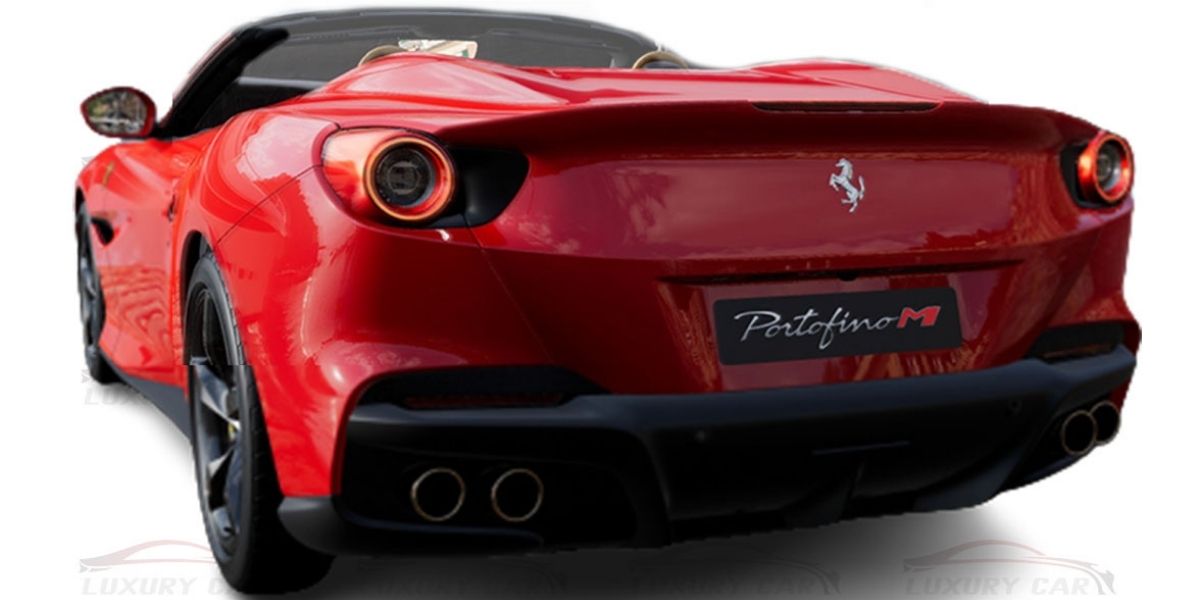THE STORY OF THE FERRARI PORTOFINO M IS EVER-CHANGING
The Ferrari Portofino M, named after the legendary ‘M’ suffix for Modificata, is the evolution of the Ferrari Portofino. The new Prancing Horse 2+ spider comes with a slew of new technical and design features, the most notable of which are an 8-speed dual-clutch gearbox and a five-position Manettino, a first for a Ferrari GT convertible. Every drive in the Ferrari Portofino M is an adventure in rediscovery.
Powertrain
The 3855cc engine in the Ferrari Portofino M belongs to the V8 turbo family, which has been named “International Engine of the Year” four times in a row (2016-2019). The engine produces 620 cv at 7,500 rpm, which is 20 cv more than the Ferrari Portofino. Ferrari engineers used new cam profiles to increase valve lift and optimise combustion chamber filling to achieve these performance levels.
A speed sensor was also added to the turbocharger assembly to measure the turbine revolutions. As a result, the turbine’s maximum revolutions per minute were increased by 5,000 rpm.
Vehicle Dynamics
The Portofino M features the Side Slip Control (SSC) vehicle dynamics control system, which includes an algorithm that provides a real-time estimate of the side slip angle to all on-board control systems. Because the systems are all integrated using shared data, the SSC coordinates all vehicle dynamics interventions.
The SSC, now in its sixth generation, combines the E-Diff, F1-TCS, SCM-E Frs, and Ferrari Dynamic Enhancer (FDE) control systems. The FDE is a lateral dynamics control system that adjusts the hydraulic brake pressure at the callipers on all four wheels using Ferrari software. It is only available on the Ferrari Portofino M when the Manettino is in Race mode. The FDE is intended to improve the predictability of the car’s lateral dynamics both when entering and exiting corners by making the steering wheel and throttle more intuitive for the driver to use. However, the FDE is not a stability control system, and it supplements rather than replaces the traditional VDC and stability control systems (ESC).
Exterior
Because the Portofino M has a more powerful engine than the Portofino, the designers at the Ferrari Styling Centre made very precise, targeted changes to highlight the model’s characteristics and emphasise its sportiness.
The wraparound front bumpers feature imposing, sculptural air intakes that give the car a decisive, aggressive appearance. They also have a new air vent at the wheel arch height, which was added to reduce the overall drag of the vehicle. Part of the airflow from the front radiating masses is directed towards the new vents and then accelerated as it exits, increasing the extraction power. A slash on the front bumper that flows into the design of the flanks highlights the improved aerodynamic performance, adding visual harmony to the car’s side view. Thus, the signature Portofino side scallop finds a visual counterpart on the front bumper of the Ferrari Portofino M, which has been sculpted to emphasise the car’s dynamic profile.
Interior
With the top down, the Portofino M reveals its stylish GT soul, and passengers will appreciate how compact and organic the entire vehicle feels. In fact, there is exceptional design coherence in the cabin’s development. The Styling Centre team began by identifying specific requirements critical to the design’s success, the most important of which were formal and functional coherency between the car’s exterior and interior, weight reduction, and increased occupant space.
The interior design began with a multi-level dashboard structure comprised of an upper half and an intermediate gap designed to lighten the perceived mass of the lower half.
Keep yourself updated by following our Social Page for the latest deals and information.











